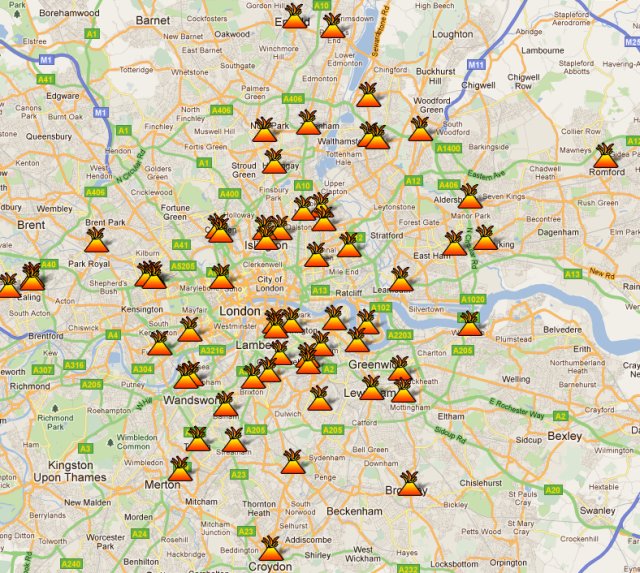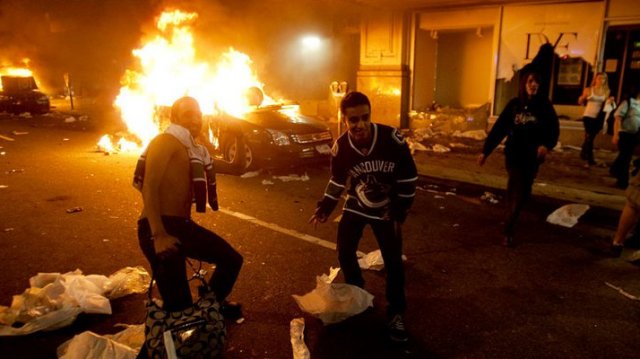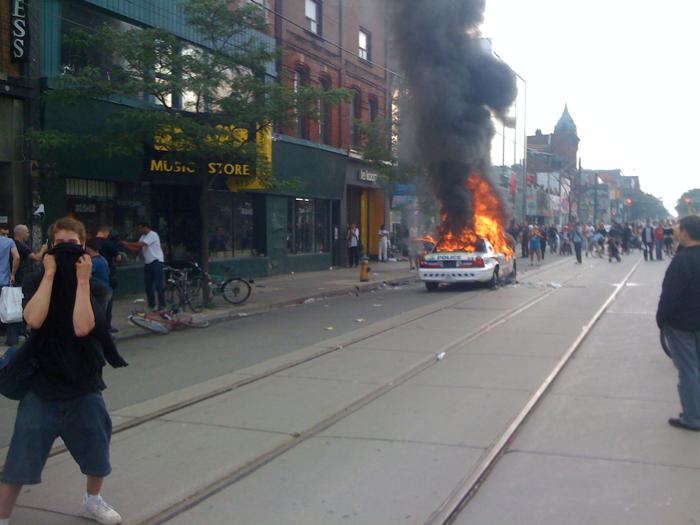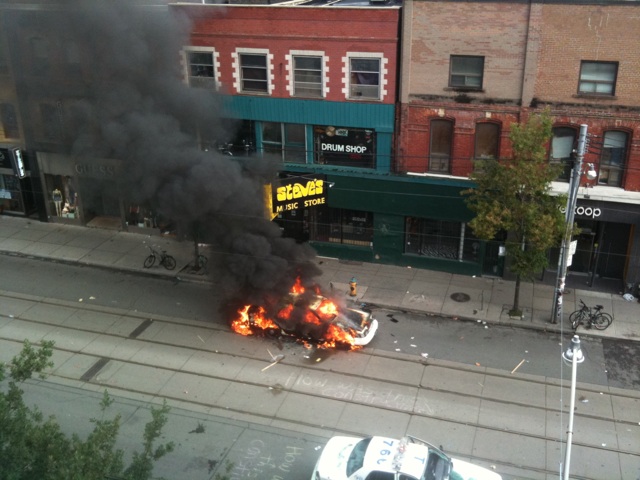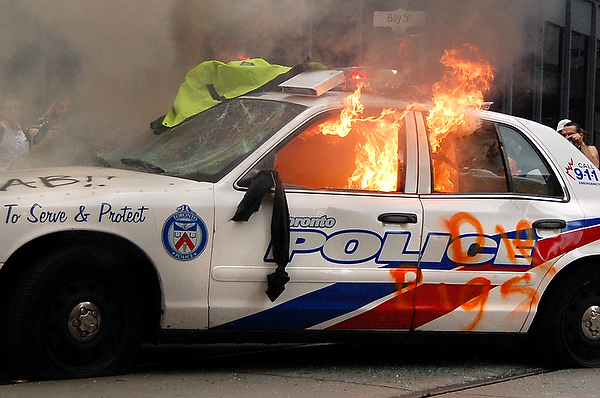The rioting in London has gotten worse, and more widespread. The media are having trouble coming up with ways to explain why it’s happening, with the most common being pent-up anger at the police:
The politicians are lucky, though, for the greater share of anger is being directed at the Metropolitan Police. The accusation, also voiced after the riots (ostensibly against public spending cuts) that took place in central London in the spring, is that the Met’s approach to civil disorder amounts to standing by for fear of provoking even more vicious rioting, with a view to catching culprits afterwards through the use of CCTV footage. The front-page headline in today’s Times, “Mobs rule as police surrender streets”, captures the mood, though the Met, alternately accused of brutality and laxity in recent years, are in an invidious position.
[. . .]
Second, policing will become a much hotter topic of political discourse. It is curious that it is not already. The theology of academic selection and university funding obsesses the political and media classes but the polling evidence is clear: crime is a bigger worry for voters than education. So expect much tardy reflection among politicians about the police. They will grapple, in particular, with the question of whether successive, well-intentioned efforts to check and soften the Met (such as the Scarman report in the 1980s, the McPherson report in the 1990s, the rebranding of the force as a “service”, the proliferation of “community support officers” and the like) have resulted in an unduly tentative approach to policing the streets. Whatever the answer, the debate will no longer take place at the margins of politics.
I’m sure it’s not the only reason, but if the way opinions about the police soured after the bungled response to the G20 protests in Toronto are a guide, it’s going to be an awful August for the Metropolitan Police. Being a cop on the street can be a tough job, but if you lose the support of the people, you’re more like a soldier in an occupied zone than an ordinary police officer. Toronto’s police lost a lot of respect — and a lot of quiet support — for their schizophrenic actions during the G20. London’s police may lose more than that.
Update: When I wrote that the rioting had become more widespread, I wasn’t exaggerating:
